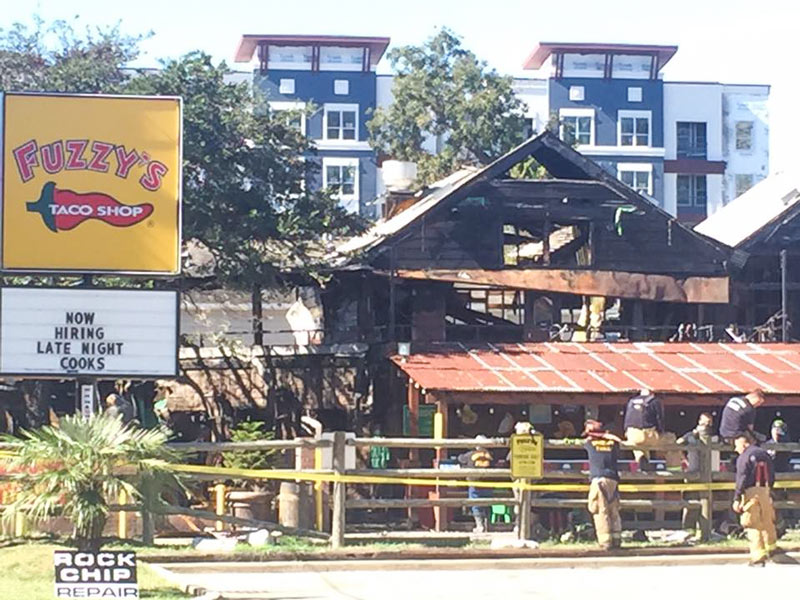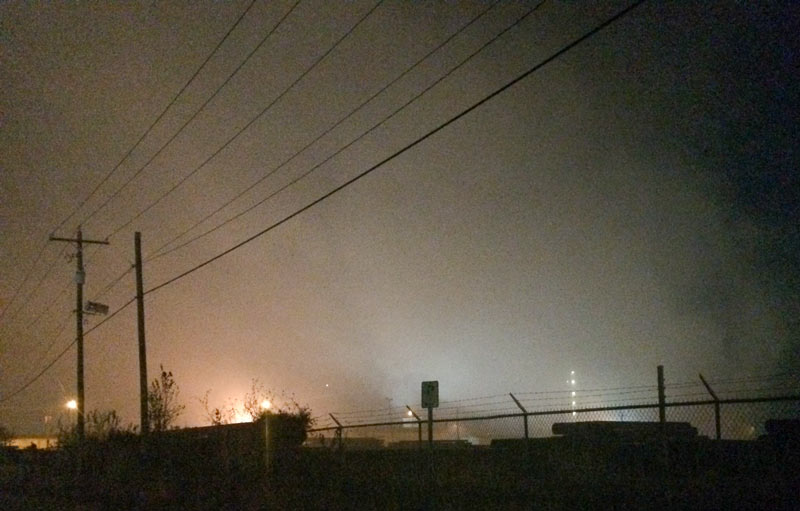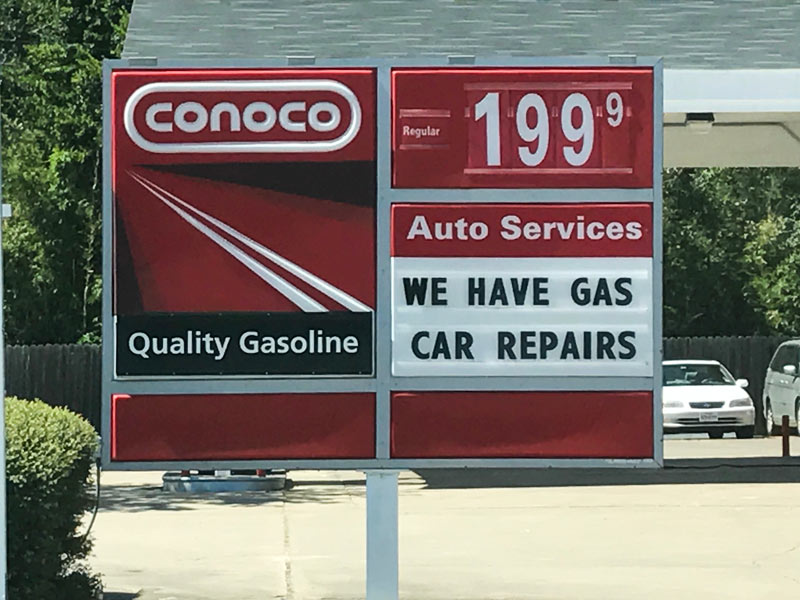
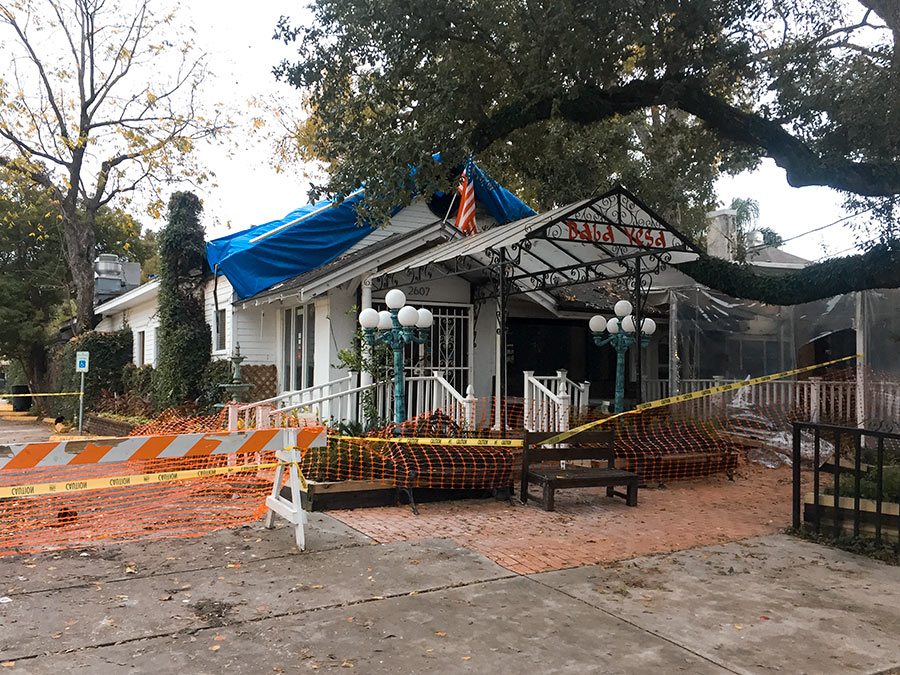
A Swamplot reader sends these 2 photos showing what longtime Avondale brunch spot Baba Yega Cafe looks like after a Friday night fire did a number on the building. Damage to the roof has mostly been covered up now by a blue tarp. At ground level, new orange fencing signals the business’s current status: closed until sometime next year, say the owners.
Next-door, scattered debris and furniture are at rest in the parking lot behind the former Montrose Mining Company. Both the Mining Company and its lot are owned by one of the same partners behind Baba Yega, Fred Sharifi, and have remained empty for the past few months while the shuttered gay bar gets reshaped into Houston’s second Postino Wine Bar.
- Fire temporarily shuts down popular Montrose brunch spot [Houston Chronicle]
Photos: Swamplox inbox


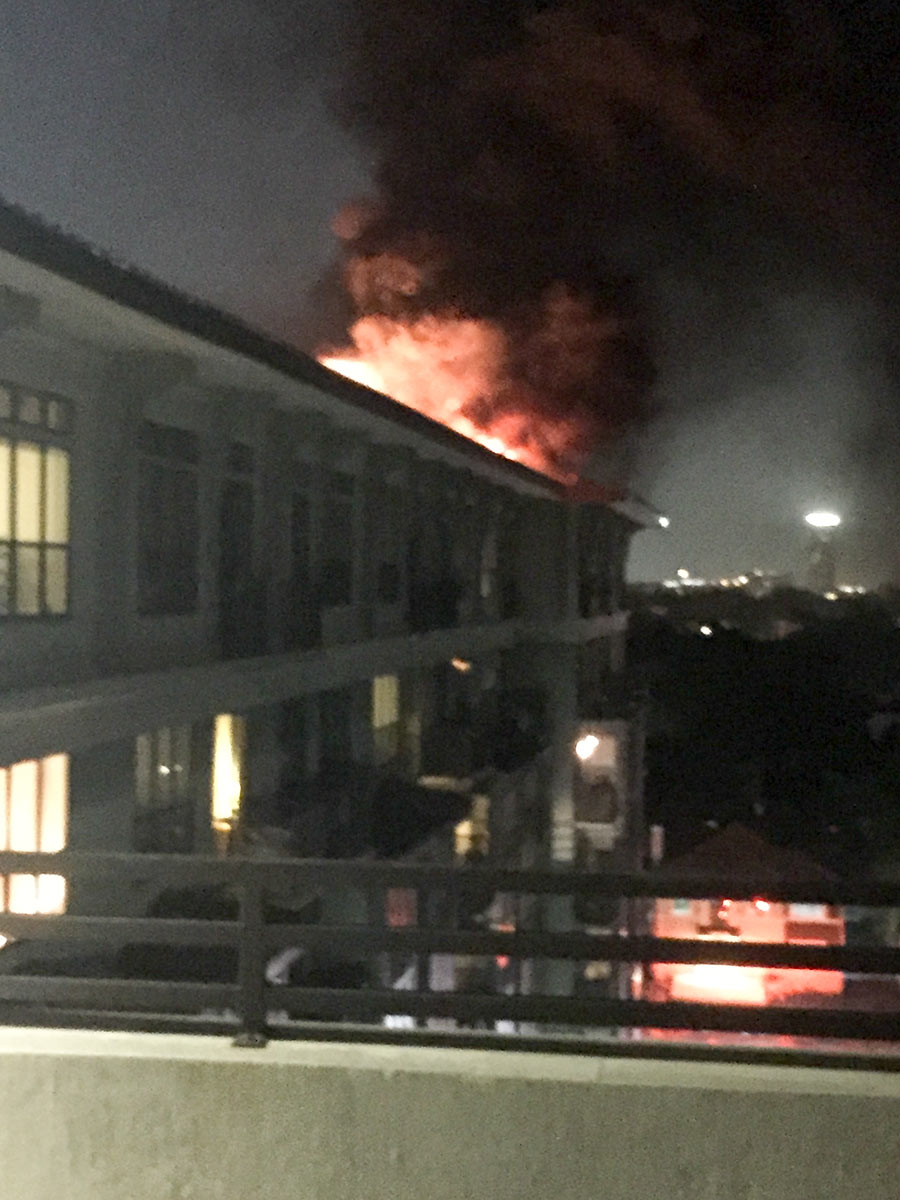 Update, 2 p.m.: A spokesperson for The Susanne’s owner, the Finger Companies, tells Swamplot that the fire was caused by a “flying sky lantern,” not by faulty piping. According to the spokesperson, 2 Susanne residents launched the decorative airborne device from the complex’s parking garage, but “the wind unexpectedly caused the lantern to land on the roof of the apartment building along the West Alabama driveway and burned long enough to cause a fire on the roof itself.” The 2 residents called 911 and later reported its cause to fire department arson investigators.
A loose rooftop gas pipe sparked this scene at The Susanne Apartments on the corner of W. Alabama and Dunlavy last night at around 9 p.m.
Update, 2 p.m.: A spokesperson for The Susanne’s owner, the Finger Companies, tells Swamplot that the fire was caused by a “flying sky lantern,” not by faulty piping. According to the spokesperson, 2 Susanne residents launched the decorative airborne device from the complex’s parking garage, but “the wind unexpectedly caused the lantern to land on the roof of the apartment building along the West Alabama driveway and burned long enough to cause a fire on the roof itself.” The 2 residents called 911 and later reported its cause to fire department arson investigators.
A loose rooftop gas pipe sparked this scene at The Susanne Apartments on the corner of W. Alabama and Dunlavy last night at around 9 p.m. 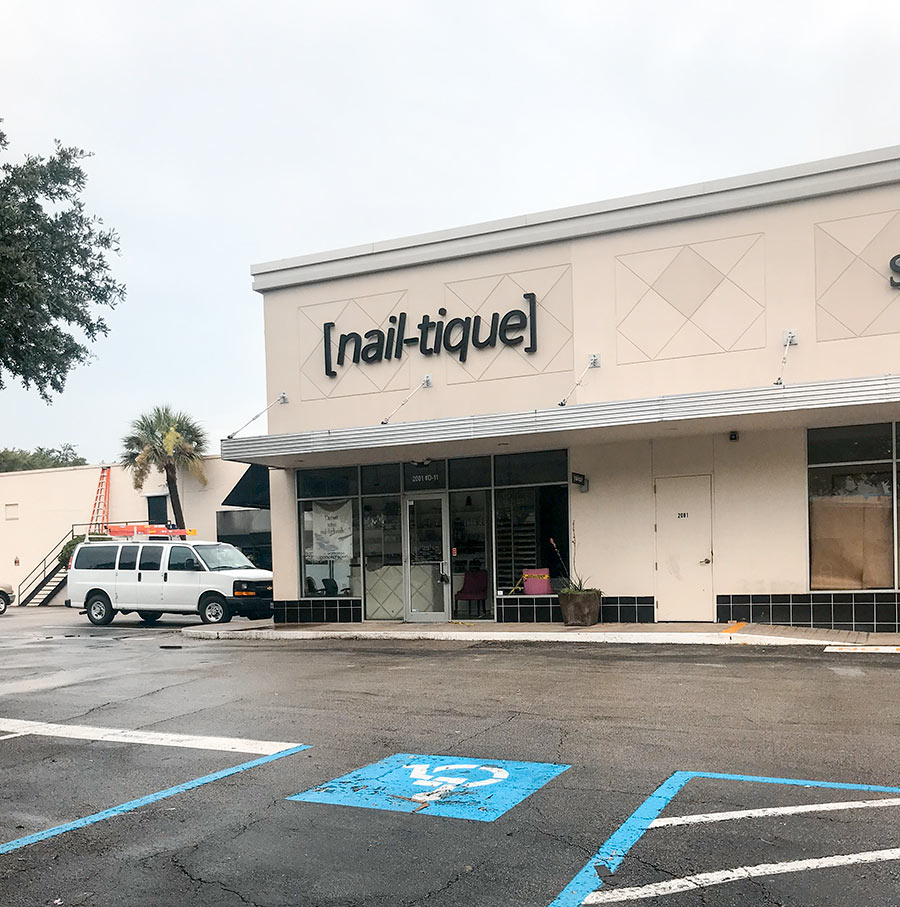

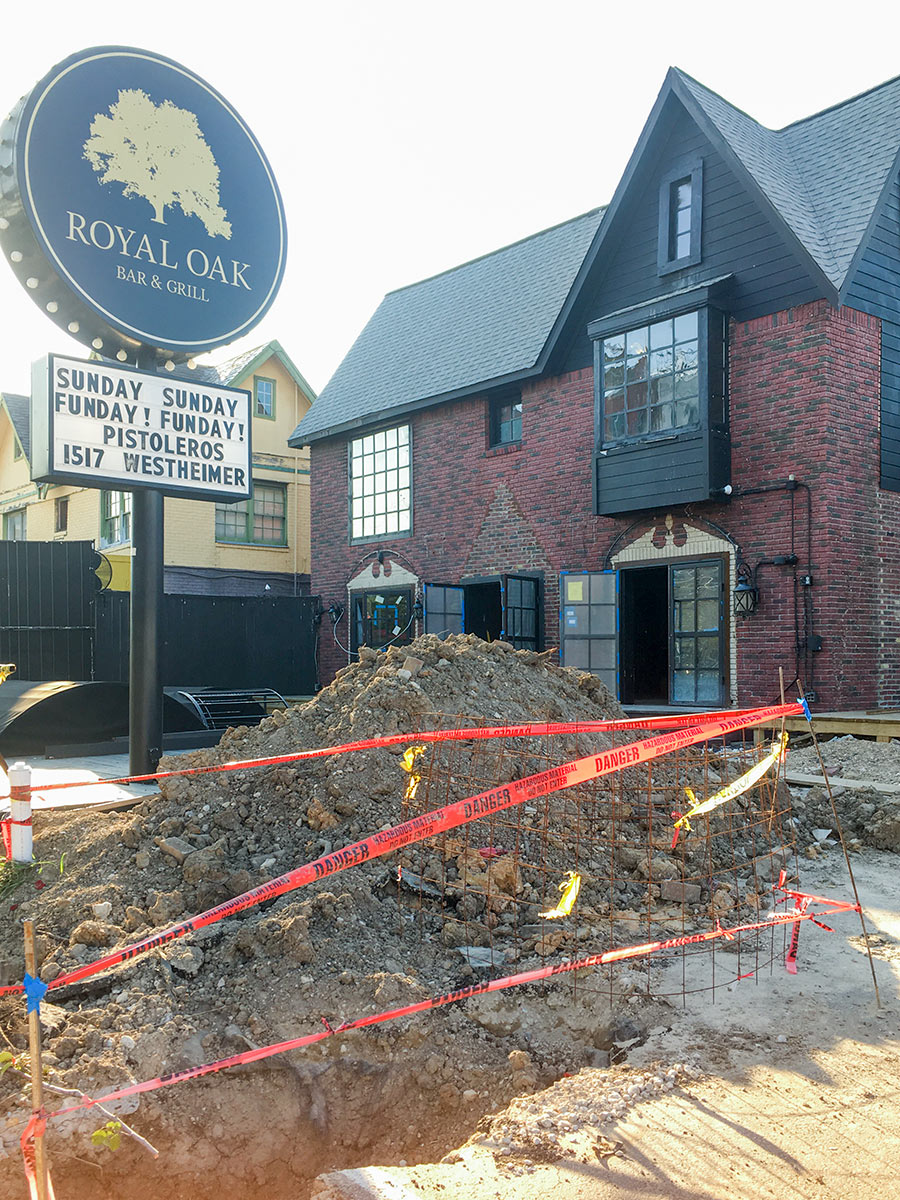
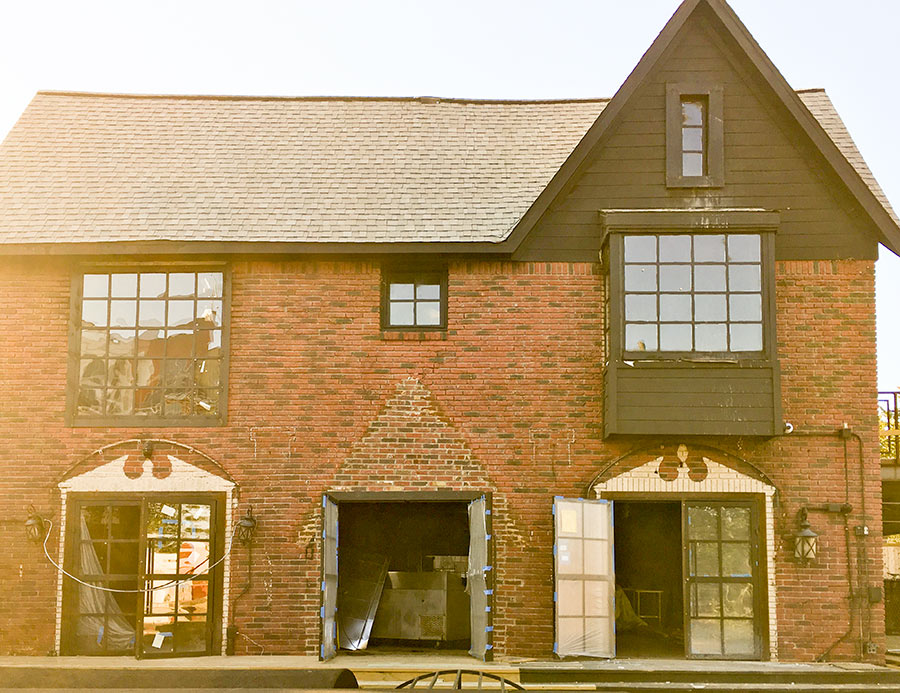
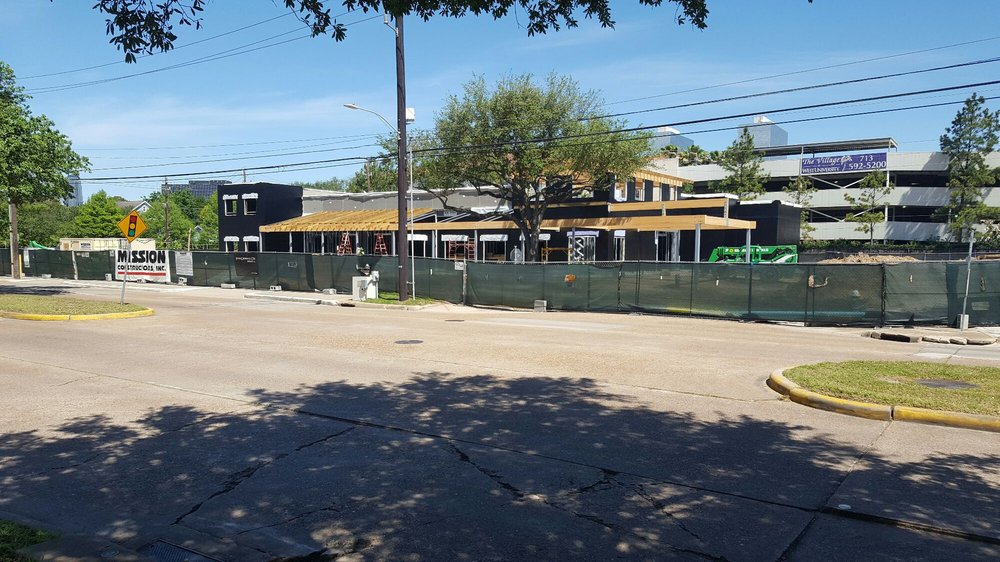

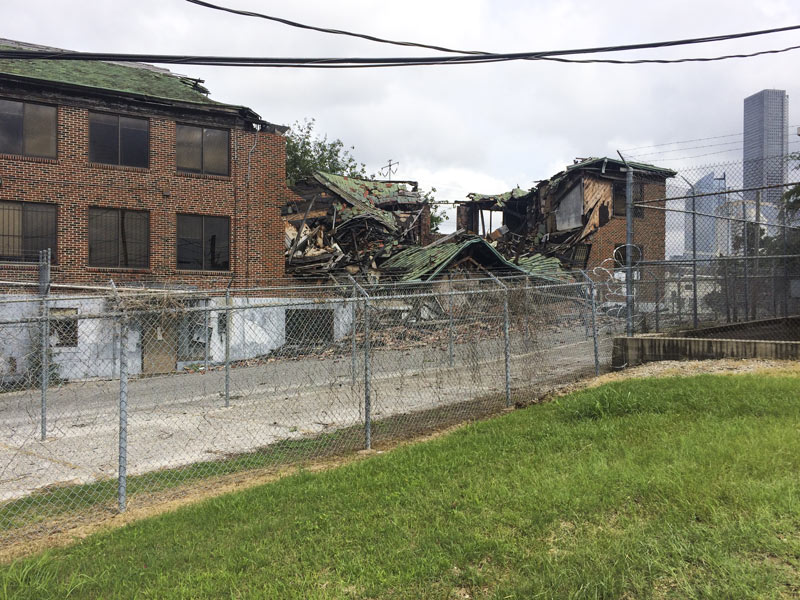
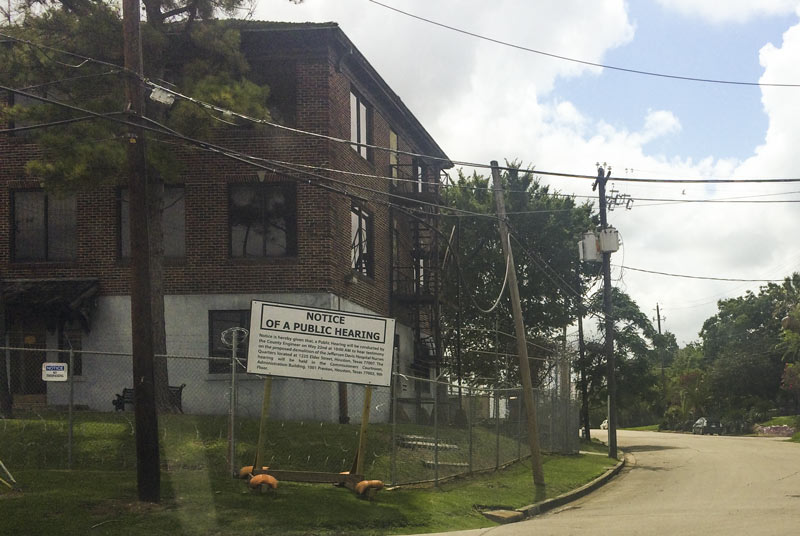

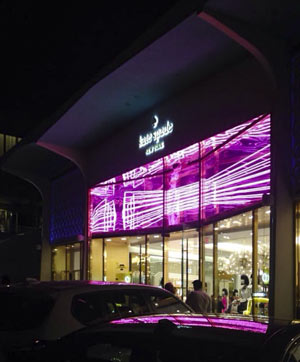
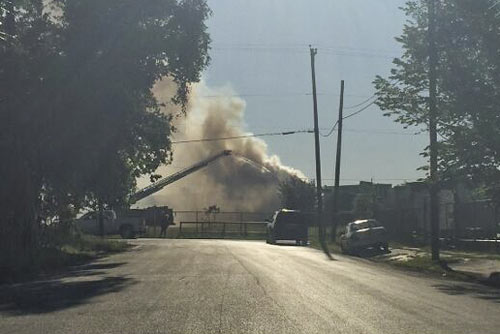 Union Pacific gives KHOU the
Union Pacific gives KHOU the 
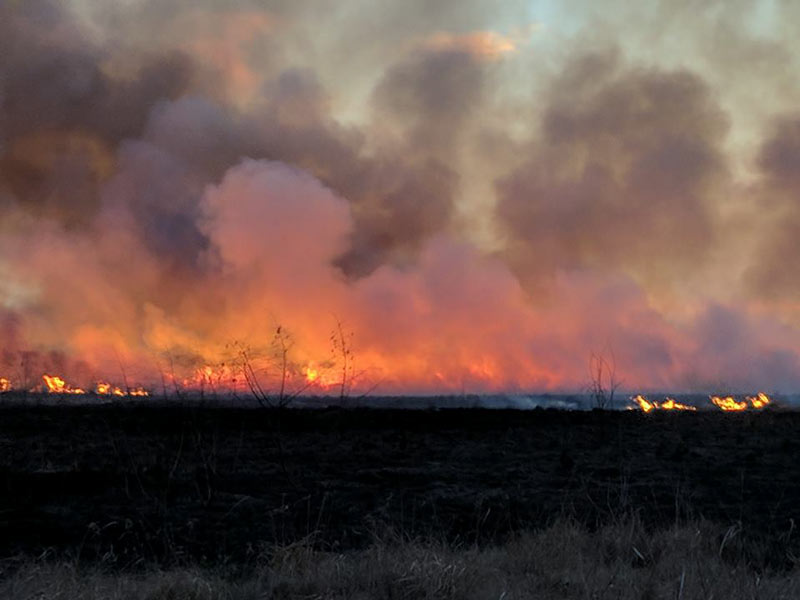
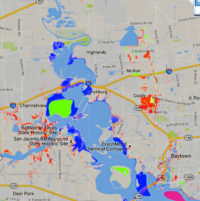 “Every home is susceptible to flooding. There are not ANY non-flood areas. There are only homes that are more likely to flood and homes that are less likely to flood. The likelihood is expressed, on flood maps, by the single-year probability of being flooded (with some other factors). This does not properly describe the likelihood of being flooded during the course of a longer time period — of, say, a 30-year mortgage. Homes eligible for NFIP preferred flood rates can have up to just less than a 1 percent chance of flooding annually. These ‘preferred areas’ are what the public thinks of, euphemistically, as non-flood areas. Assuming a .009 probability (just less than 1 percent), a home has a 20 percent chance of flooding, at least once, over the course of a 30-year mortgage (look up binomial probability). An alternative way to think about it is that 1 in 5 homes, in preferred flood zones, will flood over the course of a 30-year mortgage. [In that case,] you are actually more likely to experience a flood than a house fire in a ‘preferred flood area.'” [
“Every home is susceptible to flooding. There are not ANY non-flood areas. There are only homes that are more likely to flood and homes that are less likely to flood. The likelihood is expressed, on flood maps, by the single-year probability of being flooded (with some other factors). This does not properly describe the likelihood of being flooded during the course of a longer time period — of, say, a 30-year mortgage. Homes eligible for NFIP preferred flood rates can have up to just less than a 1 percent chance of flooding annually. These ‘preferred areas’ are what the public thinks of, euphemistically, as non-flood areas. Assuming a .009 probability (just less than 1 percent), a home has a 20 percent chance of flooding, at least once, over the course of a 30-year mortgage (look up binomial probability). An alternative way to think about it is that 1 in 5 homes, in preferred flood zones, will flood over the course of a 30-year mortgage. [In that case,] you are actually more likely to experience a flood than a house fire in a ‘preferred flood area.'” [